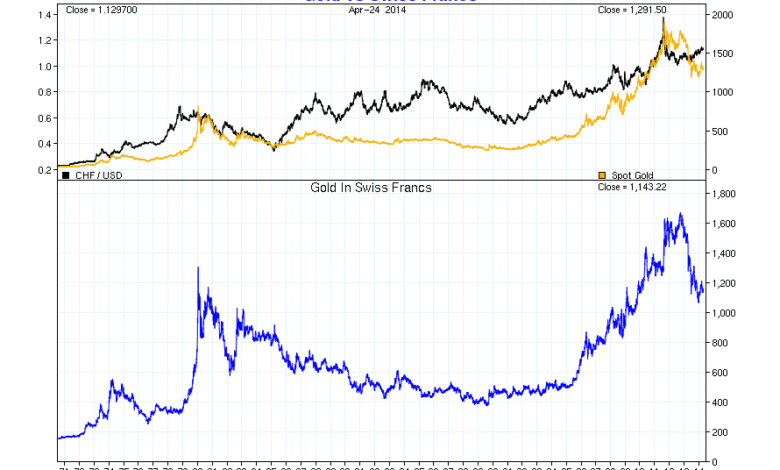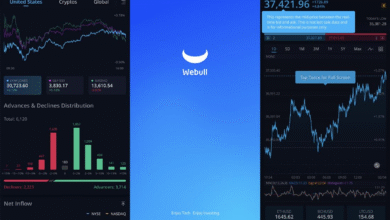Swiss Gold Tariff: 39% Tax Impacting Global Markets

The recent Swiss gold tariff, introduced by the United States at an astonishing 39%, has stirred significant debate in the global financial landscape. Implemented on August 7, 2025, this policy specifically targets imports of one-kilo and 100-ounce gold bars from Switzerland, marking a pivotal shift in the gold market dynamics. As a result, the tariff not only disrupts Swiss gold exports but also raises concerns about its broader implications on trade tariff effects worldwide. Traders and investors are closely monitoring the situation, as the impact on gold prices and market stability remains uncertain. This development is seen as a critical component in addressing the $48 billion trade deficit between the two nations, challenging established norms within the gold market framework.
In recent developments, the United States has enacted significant tariffs on gold imports from Switzerland, affecting not only exports but also the intricacies of global commerce. This substantial import duty focuses on refined gold bars, reshaping interactions between countries and raising questions about the future stability of trade relations in precious metals. As these tariffs influence market responses, stakeholders are evaluating their potential ramifications on the international gold trade. The elevated duty comes amidst a backdrop of shifting economic strategies aimed at rectifying trade imbalances, prompting discussions on how these changes alter the landscape for gold traders and investors alike. The situation epitomizes the complex relationship between trade policies and market performance, demonstrating the interconnectedness of local and global economies.
Impact of US Gold Tariffs on Swiss Gold Exports
The recent imposition of a 39% tariff by the United States on Swiss gold exports marks a profound shift in the dynamics of international trade. This tariff specifically targets one-kilo and 100-ounce gold bars, which previously enjoyed tariff-free status. As a result, Swiss exporters are likely to feel immediate repercussions, including diminished competitiveness in the global gold market. The fear among Swiss gold traders is palpable, as this significant tax could lead to reduced export volumes and revenue losses, especially since the US has historically been one of the largest importers of refined gold.
Moreover, the introduction of these tariffs could disrupt established trade relationships between Switzerland and the US. As Swiss gold exporters reassess their pricing strategies and market positions, buyers may look towards alternatives from other refining countries. This strategy not only threatens Swiss exports but could also create price volatility in the global gold market as supply chains adjust to the new tariffs. The long-term effects may lead to increased competition among gold exporting nations as they seek to capitalize on the potential shortfall in Swiss gold availability.
Global Market Dynamics Post-Tariff
The global gold market is witnessing a period of dramatic upheaval following the US government’s decision to impose a 39% tariff on Swiss gold imports. This change is expected to reverberate beyond just Swiss borders, triggering shifts in global supply and demand dynamics. Countries previously reliant on Swiss gold as a benchmark for quality may need to reevaluate their sources, potentially impacting pricing structures worldwide. The anticipated reduction in Swiss exports may not only limit availability but could also lead to increased prices as gold buyers compete for limited supplies.
As the global gold market adjusts to these new realities, other countries may seize the opportunity to increase their gold exports. Nations like Canada, Australia, and certain African countries could see a surge in demand as traders and investors look to diversify their sources away from Switzerland. This could ultimately lead to changes in global trade patterns, influencing everything from market stability to pricing trends. The intricacies of these shifts will depend heavily on how swiftly the market adapts to the trade tariff effects imposed by the US.
The Response of the Swiss Gold Refining Industry
In response to the US tariff, the Swiss gold refining industry is likely to undergo a significant transformation, adjusting to the new market realities imposed by the 39% tax. This could lead to a more innovation-driven approach, as refiners seek to enhance their competitiveness despite the increased costs associated with the tariff. Companies may invest in technology to increase efficiency or explore alternative markets that could absorb the gold that no longer flows to the US, keeping the industry robust in spite of the challenges.
Furthermore, Swiss refiners might also consider developing new partnerships with countries that have not imposed similar tariffs, thus establishing new trade corridors. As the gold market evolves, collaboration with other gold-producing nations could prove vital in securing a foothold and maintaining export levels. The adaptability of the Swiss gold refining industry will ultimately determine how effectively it can mitigate the negative impacts arising from the new trade tariffs.
Market Reactions to the 39% Tariff Announcement
The announcement of a 39% tariff on Swiss gold imports has elicited strong reactions across financial markets. Investors have already begun responding to the uncertainty, as the immediate spike in gold prices indicates a protective move amidst fears of supply constraints. This initial reaction underscores how deeply intertwined gold prices are with international trade policies, and highlights the sensitivity of the gold market to geopolitical shifts. With traders scrambling to adjust their positions, market fluctuations are likely to remain significant in the short term.
Additionally, the ripple effects of the tariff are impacting not only gold prices but the equities of companies involved in gold mining and refining. Stock prices of major gold producers have shown volatility since the announcement, as market participants weigh the potential long-term impacts on profitability and growth. This turbulence highlights the broader implications of the tariff beyond just gold prices, potentially impacting investment strategies across various sectors that are interconnected with gold trading and refining.
Looking Ahead: Future of Swiss Gold in Global Trade
Navigating the future of Swiss gold in the context of its role in global trade requires an understanding of emerging market trends and the potential for policy adjustments. While the 39% tariff presents immediate challenges, it may also create new opportunities for innovation and market expansion among Swiss exporters. As they seek alternative markets and adjust distribution strategies, it will be crucial to monitor how the Swiss gold industry positions itself in a rapidly changing landscape.
Moreover, the enduring legacy of Swiss gold as a symbol of quality and reliability may continue to command a premium in alternate markets. If the refinement standards are maintained and engagement with new trading partners is prioritized, Swiss gold may still find a niche even in a tariff-impacted environment. Future endeavors focused on enhancing customer relations and diversifying offerings may serve to reinforce Switzerland’s status as a premier player in the global gold market, notwithstanding the current tariff challenges.
The Role of Trade Tariff Effects in Gold Pricing
As the gold market grapples with the newly imposed US tariffs, understanding the role of trade tariff effects becomes essential for stakeholders involved in gold trading and investment. Tariffs create a layer of complexity that influences not only pricing structures but also supply and demand forecasts. With the US tariff on Swiss gold standing at 39%, traders need to recalibrate their pricing models to reflect these new operational costs when purchasing refined gold from Switzerland.
Moreover, as the cost of imports rises due to tariffs, end consumers might ultimately bear the burden through higher prices. This could affect demand dynamics, leading to fewer transactions and potentially slowing market growth. Therefore, it is crucial for market analysts to study the nuanced impacts of these tariffs on both short-term pricing volatility and long-term market stability, ensuring that investment strategies remain resilient against these evolving trade barriers.
Navigating Regulatory Changes in the Gold Market
With the introduction of tariffs, navigating regulatory changes in the gold market has become more complex. Countries involved in gold trade must now align their policies with the new reality created by the US tariff, taking into account the implications for both exports and imports in their domestic markets. This adaptation may require international cooperation and dialogue to mitigate potential trade disputes and ensure a smoother transition for traders operating on the global stage.
Swiss exporters, in particular, must stay abreast of not only the US tariffs but also the regulatory frameworks emerging in other key markets. Developing a robust compliance strategy that addresses all regulatory demands will be crucial for maintaining the integrity of their operations. By fostering strong relationships with trade regulators and adapting to changing legal landscapes, the Swiss gold industry can better position itself for sustainable success amid shifting market dynamics.
Economic Consequences of Tariffs on Gold Investments
The economic consequences of the new US tariffs on Swiss gold extend beyond immediate price hikes and market fluctuations. Investors need to reevaluate their gold investment strategies, considering how tariffs may alter the fundamental valuation of gold as an asset class. The introduction of significant tariffs can lead to increased uncertainties about the availability and pricing of gold, which may deter new investments and sour market sentiment.
Moreover, as the cost of acquiring gold rises due to tariffs, the demand for gold as a safe haven investment may fluctuate. While traditionally viewed as a hedge against inflation and economic instability, the added costs imposed by tariffs could make gold less attractive for some investors. Thus, it is essential for market analysts and investors to keep abreast of these developments, ensuring that their portfolios remain diversified and resilient amid these economic changes.
Potential Repercussions for International Trade Relations
The introduction of a 39% tariff on Swiss gold imports is more than a domestic economic policy; it has far-reaching repercussions for international trade relations. Diplomatic relations between the US and Switzerland may face increased strain as each country navigates the impacts of this unanticipated trade barrier. Switzerland may respond with its own tariff measures, leading to a tit-for-tat escalation that could further complicate bilateral trade and cooperation beyond just the gold market.
Furthermore, as global market dynamics shift in response to such tariffs, other nations may feel compelled to reconsider their own trade agreements and tariff structures. This could potentially lead to a reconfiguration of trading blocs and partnerships, which would affect how gold and other commodities are traded moving forward. The long-term implications of these changes might reshape the landscape of international trade in ways that extend well beyond the scope of gold itself.
Frequently Asked Questions
What is the Swiss gold tariff and how does it affect gold exports?
The Swiss gold tariff refers to the recently imposed 39% tariff on Swiss gold imports by the United States, effective from August 7, 2025. This tariff significantly impacts Switzerland gold exports, particularly for one-kilo and 100-ounce gold bars, which were previously exempt from such duties. This measure aims to address a substantial trade deficit, but raises concerns about disruptions in the global gold market.
How will the US gold tariffs impact the global market dynamics for gold?
The US gold tariffs, specifically the 39% tariff on Swiss gold, are expected to create a ripple effect in global market dynamics. Traders and investors are apprehensive about supply chain disruptions and increased costs of Swiss gold, which could lead to volatility in gold prices globally. This tariff creates uncertainty that could influence trading strategies in the gold market.
What are the concerns of Swiss exporters regarding the Swiss gold tariff?
Swiss exporters are concerned that the US gold tariff will adversely impact Switzerland’s gold refining industry and reduce competitiveness in the global market. Given that the tariff specifically targets high-value gold imports, there may be a significant decline in demand from the US, leading to potential revenue losses and market adjustments.
What is the relationship between the Swiss gold tariff and US gold tariffs?
The Swiss gold tariff is a response to broader US gold tariffs aimed at addressing trade deficits. The 39% tariff imposed on Swiss imports signifies a strategic move by the US to protect its domestic market while potentially redefining trade relations with gold-exporting countries. This also stresses the interconnectedness of international gold trading dynamics.
How did the market respond to the announcement of the Swiss gold tariff?
Upon the announcement of the Swiss gold tariff, the gold market reacted with a surge in gold prices, reflecting investor anxiety over potential supply chain issues and the future of Switzerland gold exports. The immediate effect indicated that market participants are wary of the long-term implications for global gold trading and investment.
| Key Point | Details |
|---|---|
| Tariff Imposition | The US has implemented a 39% tariff on Swiss gold imports. |
| Effective Date | The tariff takes effect from August 7, 2025. |
| Targeted Products | The tariff applies specifically to one-kilo and 100-ounce gold bars. |
| Impact on Trade | This move is aimed at addressing a $48 billion trade deficit with Switzerland. |
| Concerns in the Market | There are concerns about potential disruptions in the global gold market among Swiss exporters and traders. |
| Market Reaction | Following the announcement, gold prices surged due to market uncertainty. |
Summary
The Swiss gold tariff has created significant waves in the international market following its announcement. With the US imposing a 39% duty on Swiss gold imports, effective from August 7, 2025, the implications for the gold refining industry and global market dynamics are profound. Stakeholders are closely monitoring these developments due to the potential impact on prices and supply chains.




